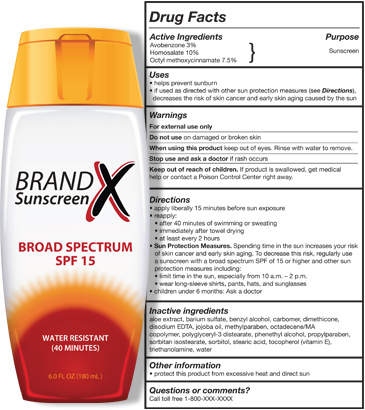PHOTO: According to a Consumer Reports analysis, nearly half of tested sunscreen products fail to meet the SPF claim on the label. Courtesy of FDA
By Michael V. Cusenza
Citing a new Consumer Reports analysis that suggests that 43 percent of sunscreen products fail to meet the Sun Protection Factor claim on the label, U.S. Sen. Charles Schumer has urged the Food and Drug Administration to launch an investigation into the possible deceptive SPF marketing.
SPF is a measure of how much solar energy (UV radiation) is required to produce sunburn on protected skin (i.e., in the presence of sunscreen) relative to the amount of solar energy required to produce sunburn on unprotected skin. As the SPF value increases, sunburn protection increases.
According to the study, 28 out of 60 sunscreen lotions, sprays and sticks with SPF labels of 30 or higher actually offered less protection than what was listed on the bottle. Moreover, three of the tested products offered SPF levels of less than 15. For four years, Consumer Reports has tested SPF claims, Schumer noted. Of products that were listed as SPF 30-39, 65 percent of chemical and mineral sunscreens tested higher than SPF 30. Of products that were listed as SPF 40-110, 70 percent of chemical and mineral sunscreens tested higher than SPF 30.
“There is simply no doubt about it – some consumers are being totally burned when they buy sunscreen, which is why the FDA must give sunscreen labels the third degree,” Schumer quipped. “With beach season officially in full swing and with a New York City heat wave on the way, the FDA needs to make sure the SPF labels on sunscreen products match the SPF protection being offered. In light of this new study that reveals nearly half of tested sunscreens are offering less protection than its label claims, the FDA should launch a full-on investigation into deceptive SPF marketing. Beachgoers and vacationers deserve the peace of mind to know that the sunscreen they’re using is offering legitimate protection against the sun’s harmful rays.”
Schumer added that proper SPF labeling is important because of the prevalence of skin cancer in this country. According to the U.S. Centers for Disease Control and Prevention, skin cancer is the most common cancer in the United States.
“While the FDA is aware of the Consumer Reports article on sunscreen products, we cannot speculate on why Consumer Reports found differences between SPF values in its testing and those on product labels,” FDA spokeswoman Andrea Fischer told The Forum. “Manufacturers of sunscreen drug products are responsible for the quality of their products and for determining the SPF reported on the labels for their products, by following specific test methods set forth in FDA regulations. When performed according to current regulatory requirements, the FDA’s established SPF test method demonstrates a sunscreen’s effectiveness in helping prevent sunburn.”
Fischer later added that “All drug products, including sunscreens, are subject to FDA inspection and sunscreen products that are found not to be in compliance with applicable regulations are subject to FDA regulatory actions. At times, the FDA may also initiate targeted surveillance programs to evaluate compliance with specific requirements.”
The FDA also reminded consumers to regularly use sun protection measures, including:
- Limit time in the sun, especially between the hours of 10 a.m. and 2 p.m., when the sun’s rays are most intense.
- Wear clothing to cover skin exposed to the sun
- Use Broad Spectrum sunscreens with SPF values of 15 or higher regularly and as directed
Reapply sunscreen at least every two hours, more often if you’re sweating or jumping in and out of the water.
michael@theforumnewsgroup.com

